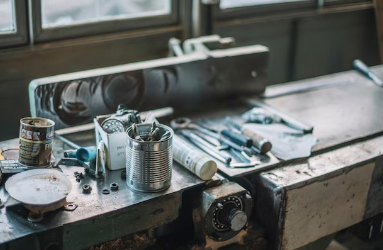Introduction
CNC (Computer Numerical Control) and mold machining are two widely used manufacturing techniques that play a crucial role in various industries. While both processes involve the production of precision components, they have distinct differences in terms of methodology, applications, and advantages. In this article, we will explore the key aspects of CNC and mold machining and delve into the factors that differentiate these two techniques.
1. Understanding CNC Machining
CNC machining is a manufacturing process that utilizes computerized controls to operate machine tools and produce precise components. It involves subtractive manufacturing, where material is gradually removed from a workpiece until the desired shape and dimensions are achieved.
2. The Basics of Mold Machining
Mold machining, on the other hand, refers to the process of creating molds or tooling used for producing multiple copies of a particular product. It is commonly employed in industries such as automotive, aerospace, and consumer goods, where mass production is required.
3. Methodology: CNC Machining
In CNC machining, the process begins with the creation of a 3D design model using computer-aided design (CAD) software. The design is then converted into machine-readable code, which guides the CNC machine to execute the necessary machining operations. Different tools, such as milling cutters, drills, and lathes, are used to shape the workpiece according to the design specifications.
4. Methodology: Mold Machining
Mold machining involves several steps, starting with the creation of a master pattern or prototype. This pattern is used to produce a mold cavity, typically made of metal. The mold cavity is then filled with molten material, such as plastic or metal, to create the desired product. Mold machining requires precision and attention to detail to ensure the accurate replication of the master pattern.
5. Applications: CNC Machining
CNC machining is widely used in various industries, including automotive, aerospace, electronics, and medical. It is particularly suitable for producing complex and intricate components with tight tolerances. CNC machines can work with a wide range of materials, including metals, plastics, and composites, making it a versatile manufacturing process.
6. Applications: Mold Machining
Mold machining finds its primary application in industries that require mass production of identical products. It is extensively used in automotive manufacturing, where molds are used to produce car parts, such as bumpers, dashboards, and door panels. Other industries that rely on mold machining include consumer goods, packaging, and electronics.
7. Advantages of CNC Machining
CNC machining offers several advantages over traditional machining techniques. Firstly, it enables high precision and accuracy, ensuring consistent quality in the manufactured components. Secondly, CNC machines can operate continuously without manual intervention, leading to increased productivity and reduced labor costs. Additionally, the flexibility of CNC machining allows for quick and easy design modifications, making it ideal for prototyping and small-scale production.
8. Advantages of Mold Machining
Mold machining presents its own set of advantages. By using molds, manufacturers can replicate products with remarkable consistency and efficiency. This reduces the risk of variations or defects in the final products. Furthermore, mold machining enables economies of scale, as the cost per unit decreases with higher production volumes. The ability to produce large quantities of identical products quickly is a significant advantage in industries where mass production is essential.
9. Limitations of CNC Machining
Despite its advantages, CNC machining has certain limitations. One of the primary challenges is the high initial investment required for CNC machines and the associated software. Moreover, the complexity of CNC programming can be a barrier for some manufacturers, requiring skilled operators or programmers. Additionally, CNC machining may not be suitable for large-scale production due to the time-consuming nature of the process.
10. Limitations of Mold Machining
While mold machining offers numerous benefits, it also has limitations. Creating molds can be time-consuming and expensive, especially for intricate designs. Any modifications or changes to the molds can introduce additional costs and delays. Moreover, mold machining is best suited for high-volume production, making it less economical for smaller production runs.

